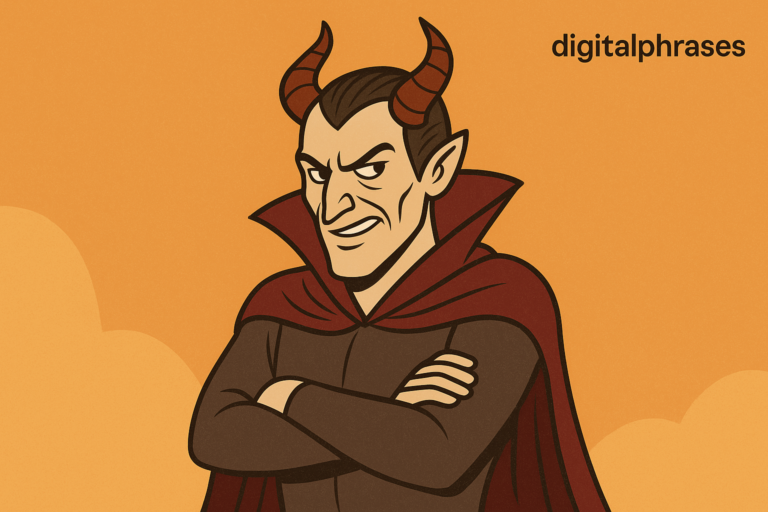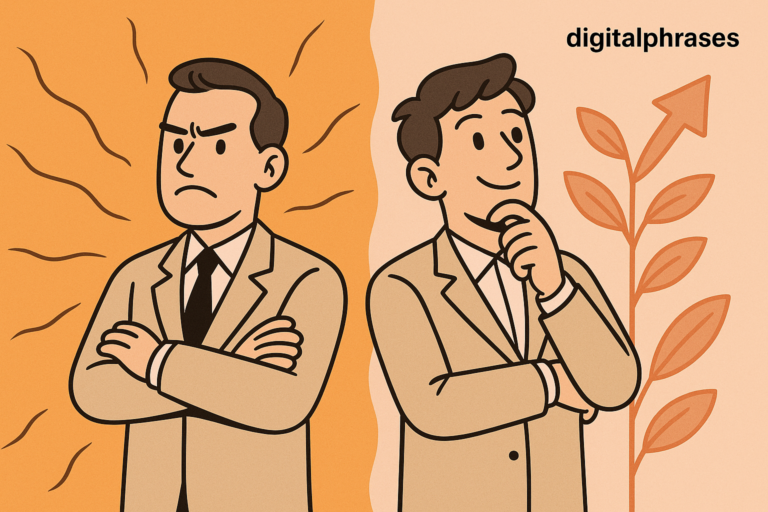How To Use Dialogue to Heighten Conflict and Tension in a Story
You already know that dialogue does more than move the plot—it reveals character, builds relationships, delivers exposition, etc. But here’s something I’ve been thinking about lately: great dialogue is conflict. Not a vehicle for conflict. The conflict is in the dialogue.
Think of that moment in Succession when Logan says, “You are not serious people.” It’s not just a zinger—it’s a surgical strike that fractures trust, power, and family in one beat.
No exposition, no internal monologue. Just words with weight.
When dialogue is working at its highest level, it doesn’t just show conflict—it tightens it, twists it, makes us squirm.
Why?
Because it puts us right inside a moment where two (or more) characters want different things, and neither is willing to blink.
In this piece, I’m diving into the mechanics of that tension—not the basics, but the stuff that makes even experienced writers stop and think.
What’s not being said?
Why now?
What’s at stake in this exact line of dialogue?
If you’ve ever written a scene that should’ve exploded but just… fizzled, you’re in the right place.
Techniques That Drive Discomfort
Let’s get into the nitty-gritty.
These aren’t just generic “tips”—these are tools I’ve seen elevate scenes from flat to fire. If you’ve ever had a character argue but the scene still felt limp? One or more of these techniques probably weren’t doing enough work.
1. Subtext is Where the Fire Lives
We all know subtext is powerful—but I’m convinced most writers still underuse it. Tension thrives in what’s not said.
The most uncomfortable moments come when a character is clearly avoiding the truth, or when the reader senses there’s another layer lurking just under the words.
Example: In Normal People, Marianne and Connell constantly talk around their feelings, never directly naming what they want. And it’s maddening—in the best way. The tension is thick because every line hints at vulnerability no one’s willing to expose.
Pro move: If your characters are being brutally honest too often, you’re probably draining the tension too fast. Let them squirm in silence or sarcasm instead.
2. Power Imbalances Create Unease
When one character holds power—social, emotional, or literal—the conversation automatically becomes charged. The reader leans in, wondering when the balance will shift. This doesn’t mean someone has to be a villain; even temporary emotional leverage can raise the stakes.
Example: In The Godfather, Michael’s restaurant scene with Sollozzo is so tense not just because we know he has a gun—but because he’s the least powerful person in the room… until he’s not.
Try this: Give one character something to lose and the other nothing at all. Dialogue becomes a chess match real fast.
3. Strategic Interruptions (Let Them Talk Over Each Other)
Real conversations—especially tense ones—are messy. People interrupt, talk past each other, escalate. Perfectly timed interruptions signal impatience, anger, dominance, or fear. They’re also a great pacing tool. A clipped, cut-off line is a line that never lands safely.
Example: Think of any Tarantino scene. Characters constantly overlap—no one’s waiting their turn. It creates this charged, almost theatrical rhythm.
Pro tip: Use em dashes (“—”) to show someone being cut off mid-thought. Visually, it adds tension. Tonally, it screams urgency.
4. Evasion is More Tense Than Confrontation
Counterintuitive, but true: sometimes the most tension-filled exchanges are the ones where someone refuses to engage. Avoidance can create suspense because it frustrates both the other character and the reader.
Example: In Breaking Bad, Skyler’s silences are louder than Walt’s monologues. Her refusal to play along forces us to read between the lines.
Pro move: Give one character a clear objective, and have the other dodge every single attempt. It’s the dramatic equivalent of trying to punch smoke.
5. Politeness as a Weapon
There’s something beautifully cruel about weaponized civility. When characters are furious but smile through their rage, it puts the reader in a deliciously uncomfortable position—because they know something’s going to crack.
Example: In The Favourite, nearly every scene is dripping in sugar-coated venom. The characters maintain etiquette while absolutely eviscerating each other.
Try this: Have a character say “Thank you” through clenched teeth. That tension between words and emotion? Gold.
6. Emotional Misdirection Keeps Readers Off Balance
One way to keep tension high is to pull the scene in the wrong emotional direction—at least for a moment. If the reader expects anger but gets humor, or expects tears and gets defiance, that tonal twist keeps them guessing.
Example: In Fleabag, the title character often deflects serious emotional tension with humor or irreverence. It doesn’t diffuse the tension—it delays the explosion, making it worse when it finally hits.
Pro tip: Think of dialogue like a rollercoaster. A sudden shift keeps the adrenaline pumping. Flat is death.
7. Let Characters Fail to Connect
This one’s subtle but so powerful. Sometimes, the tension doesn’t come from an argument—it comes from a missed connection. Characters talking past each other. A moment that should have been tender that turns awkward instead.
Example: In Eternal Sunshine of the Spotless Mind, the early conversations between Joel and Clementine are laced with tension because they don’t quite get each other—yet there’s clearly something trying to form between them.
Pro move: Have one character reach out (verbally or emotionally), and let the other just… miss it. That ache lingers long after the line.
Strategic Uses of Dialogue in Conflict-Driven Scenes
So, let’s shift gears. Now that we’ve gone deep into the mechanics of tension within dialogue, let’s talk about how to use dialogue strategically to structure scenes around conflict.
Because even the best line falls flat if it’s dropped into a scene that isn’t doing its part.
These moves aren’t about what characters say—but why, when, and how you deploy their words to amplify tension.
1. Start with an Imbalance—and Make It Worse
Scenes feel electric when we begin with something off: someone’s on edge, someone knows something they shouldn’t, someone wants something the other can’t or won’t give.
Don’t start with calm and escalate—start mid-simmer and push it toward boiling.
Example: In Gone Girl, almost every Nick and Amy scene starts with suspicion or manipulation already in play. Dialogue becomes the tightrope they both walk—every line deepens the imbalance.
What to try: Ask yourself, “What’s already wrong before anyone speaks?” Then let your dialogue twist that knife.
2. Let Backstory Bleed Into the Present
Tension skyrockets when dialogue reveals (or weaponizes) shared history. These aren’t flashbacks—they’re emotional landmines that explode in real time.
A simple phrase like, “You always do this,” carries years of resentment in four words. That kind of history-laced dialogue hits hard because it makes the conflict feel layered and real.
Example: In The West Wing, characters constantly refer to past betrayals or victories mid-argument. It complicates the scene and makes the stakes feel personal and political.
Pro tip: Use dialogue to show how the past still owns the present. Even a half-remembered joke can sting if it’s told at the wrong moment.
3. Use Dialogue to Delay the Bomb Drop
Great tension often comes from suspense, not just drama. If a character has a secret or a brutal truth to reveal, don’t let them blurt it out. Make them work for it—or dodge it until they can’t anymore.
Stretch the scene. Make the reader feel like they’re watching a fuse burn.
Example: In Big Little Lies, characters often dance around difficult conversations for entire scenes. The tension builds because you know something’s going to break—you just don’t know when.
Try this: Have a character try to confess, only to be interrupted, distracted, or chicken out. That frustration becomes narrative fuel.
4. Escalate in Microbeats, Not Leaps
Conflict should evolve in dialogue, not jump suddenly from zero to sixty. A great fight scene in fiction builds through micro-escalations—small digs, slightly raised voices, shifting body language—before it fully blows.
Dialogue can be the matchstick, but escalation is the oxygen.
Example: In Marriage Story, the big fight between Charlie and Nicole doesn’t start with yelling. It builds from civil disagreement to emotional collapse in painfully precise steps.
Pro move: After each exchange, raise the emotional stakes just a little. Make each line more raw, more desperate, more personal.
5. Make Silence Speak Louder Than Words
Sometimes, the most powerful moment in a tense dialogue scene is when someone just… doesn’t answer. A pause, a refusal, even a subject change can make tension spike, because now the reader is doing the emotional math.
Example: In The Leftovers, conversations often unravel not through shouting, but through avoidance. A character walks away, or says “nothing,” and that absence becomes unbearable.
Pro tip: Use silence with intent. It only works if the reader knows what’s supposed to be said—and feels the ache when it’s not.
6. Turn Dialogue into a Test
One of my favorite tricks: make a character’s line of dialogue a kind of emotional test. They’re not just speaking—they’re setting a trap to see how the other character will respond. Will they lie? Flinch? Deflect?
This turns dialogue into a game of emotional chess.
Example: In Better Call Saul, nearly every Saul-Kim scene in later seasons feels like a test. Kim is watching him closely, knowing his words don’t always mean what they seem.
What to try: Write a line that has two meanings—one safe, one dangerous. Let the tension come from how the other character reacts.
7. End on the Line That Cuts Deepest
Don’t let tense dialogue fizzle out with a shrug. The final line in a conflict scene should land like a punch or a door slam. This doesn’t mean it has to be loud—but it has to leave a mark.
Example: In Mad Men, Don Draper’s “I don’t think about you at all” is one of the coldest mic drops ever—and it ends the scene in absolute silence.
Pro move: Rewrite the last line of your dialogue scene three times. Make one cruel, one vulnerable, one ambiguous. See which one leaves a scar.
Before You Leave
If there’s one big idea to walk away with here, it’s this: dialogue doesn’t support conflict—it is the conflict. It’s the battlefield, the weapon, and the fallout all at once.
When done well, even a quiet conversation over coffee can be more gripping than a shootout.
Why?
Because we’re not just hearing characters speak—we’re watching them scheme, defend, reveal, manipulate, retreat, explode. Every line has a motive. Every silence, a consequence.
So next time you’re writing a scene and something feels flat, don’t reach for more plot. Take a closer look at the words between your characters. Odds are, the tension is already there—you just need to light the match.


![What Makes a Character Memorable? [The Core and Key Traits] What Makes a Character Memorable? [The Core and Key Traits]](https://digitalphrases.com/wp-content/uploads/2025/04/character_banner-768x512.jpg)



